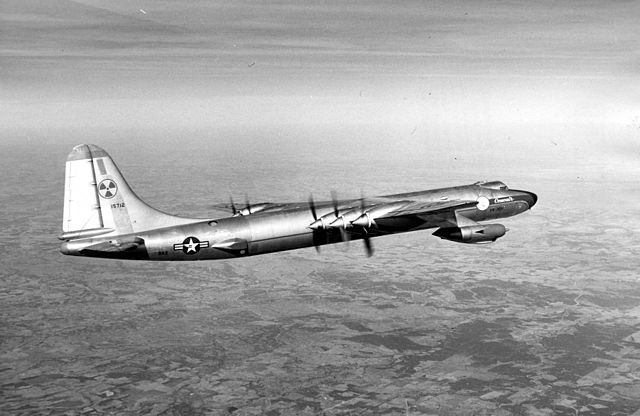A nuclear-powered aircraft is a concept for an aircraft intended to be powered by nuclear energy. The intention was to produce a jet engine that would heat compressed air with heat from fission, instead of heat from burning fuel. During the Cold War, the United States and Soviet Union researched nuclear-powered bomber aircraft, the greater endurance of which could enhance nuclear deterrence, but neither country created any such operational aircraft.
The only US aircraft to carry a nuclear reactor was the NB-36H. The reactor was never actually connected to the engines. The program was canceled in 1958.
Experimental HTRE reactors for nuclear aircraft, (HTRE-2 left and HTRE-3 right) on display at the Experimental Breeder Reactor I facility (43°30′42.22″N 113°0′18″W / 43.5117278°N 113.00500°W / 43.5117278; -113.00500).
The Convair NB-36H was an experimental aircraft that carried a nuclear reactor to test its protective radiation shielding for the crew, but did not use it to power the aircraft. Nicknamed "The Crusader", it was created for the Aircraft Nuclear Propulsion program, to show the feasibility of a nuclear-powered bomber. Its development ended with the cancellation of the ANP program.
Convair NB-36H
An underside view of the aircraft
The NB-36H in flight. Note the 2 pods; each was mounted near the wingtips of the aircraft and both carried two GE J47 jet engines each.




